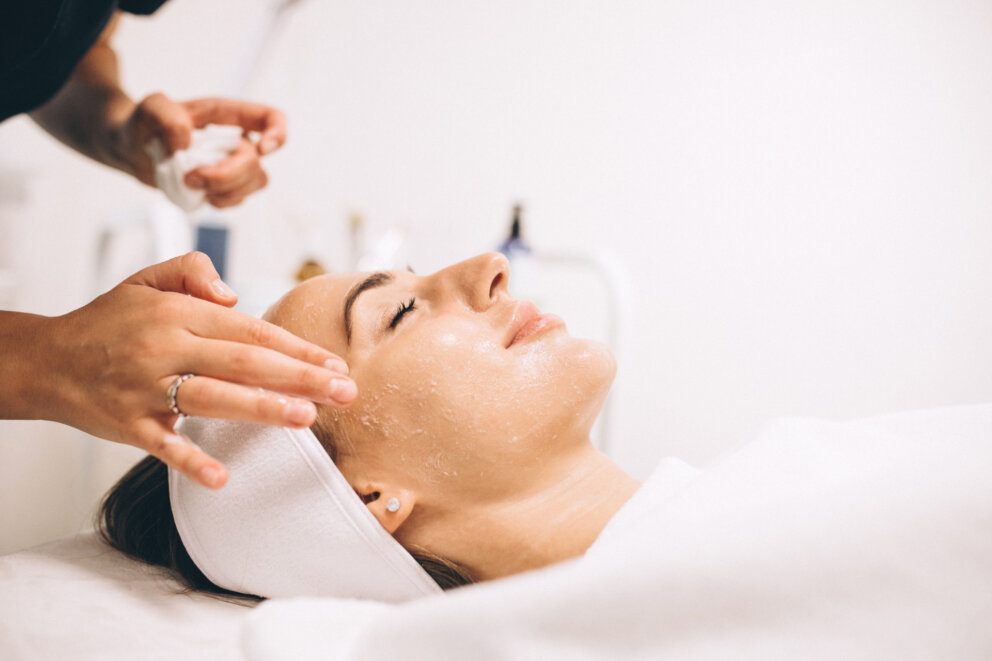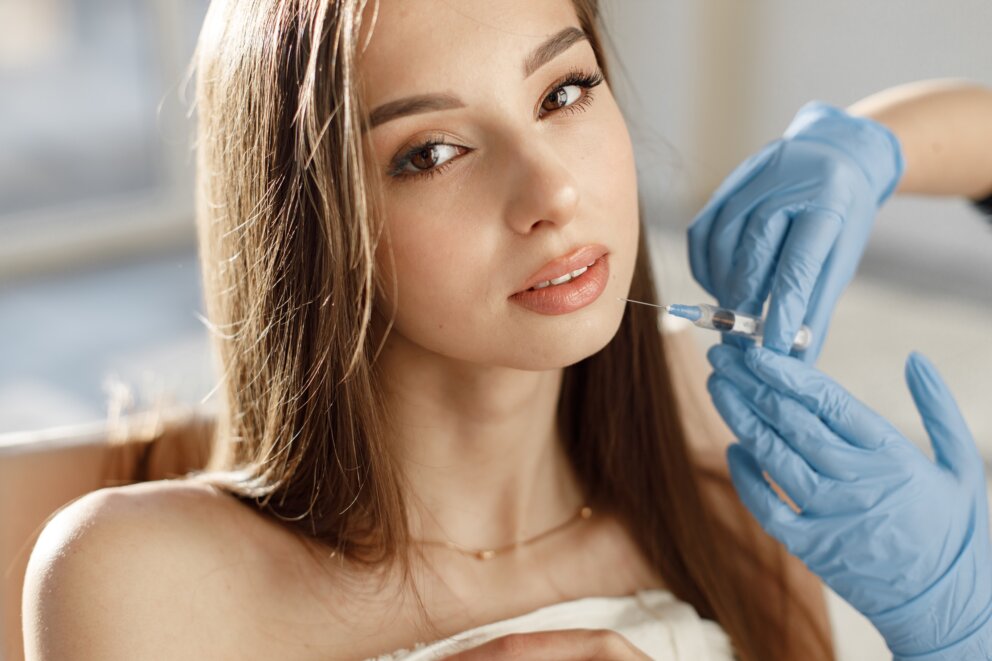This condition causes the formation of various lumps on the surface of the skin, which can form anywhere. They are most often found on the face, neck, back or shoulders. Following a healthy diet can help prevent and treat acne.
What causes acne?
The surface of the skin is covered with pores, which are connected by sebaceous (oil) glands under the skin. Sebaceous glands produce an oily fluid - sebum. Sebaceous glands send sebum up to the surface of the skin through a thin duct (follicle). The sebum gets rid of dead skin cells by carrying them through the follicle to the surface of the skin. Acne occurs when pores become clogged with dead skin cells, excess sebum and sometimes bacteria. During puberty, hormones often cause the sebaceous glands to produce excess sebum, which increases the risk of acne.
There are three main types of acne:
- blackheads, or open comedones, are small dark areas that form when the sebaceous gland closes
- white dots are a type of pimple when there is a raised round lesion with a white cap at the apex
- pimples are usually painful, reddened and raised lesions filled with pus
How does diet affect the skin?
"Some foods raise blood sugar levels faster than others. When blood sugar rises rapidly, it causes the body to release insulin. Excess insulin in your blood can cause your sebaceous glands to produce more sebum, which increases your risk of acne." Says M.D. Vanda Przewlocka.Foods that increase sugar levels include bread, cereals, pasta or desserts made with white flour, white rice and rice noodles, sodas and other sugar-sweetened beverages, sweeteners such as cane sugar, maple syrup, honey or agave. Due to their effects on insulin production, these foods are considered to have a high glycaemic index. Carbohydrates - are made from simple, so-called. refined, sugars.
Chocolate is often cited as one of the causes of skin problems because of its high sugar content, so it also has a high glycaemic index (GI). In addition to sugar, milk chocolate also contains milk, which, in addition to acne, is also known to make more and more people lactose intolerant, or milk protein intolerant. Which can also have a negative impact on skin quality. If you can't imagine your life without chocolate, try dark chocolate, which contains more antioxidants and less milk.
Which foods are thought to help your skin?
Eating low-glycemic foods can reduce the risk of acne. Complex carbohydrates are found in the following foods: legumes, unprocessed fruits and vegetables. Foods that are also considered beneficial for the skin because they reduce inflammation include yellow and orange fruits and vegetables (carrots, apricots and sweet potatoes), spinach and other dark green and leafy vegetables, blueberries (an excellent antioxidant), whole grain bread, brown rice, quinoa, turkey, pumpkin seeds, beans, peas and lentils. Green tea contains polyphenols, which are associated with reduced inflammation and reduced sebum production. Green tea extracts have been found to reduce the severity of acne when applied to the skin. In addition to its beneficial effects on our metabolism, turmeric also contains curcumin, which can help regulate blood sugar levels, improve insulin sensitivity and inhibit the growth of acne-causing bacteria, which can ultimately reduce it.
Vitamins A, D, E and Zinc
Check with your doctor before taking vitamin A supplements. Vitamin A toxicity can cause permanent damage to major organs such as. cirrhosis of the liver. In a study published in the BioMed Research International Journal Trusted Source, researchers looked at the relationship between blood zinc levels and acne severity. Zinc is a mineral important in skin development as well as in the regulation of metabolism and hormone levels. Low zinc levels are associated with more severe cases of acne. It is recommended to increase the amount of zinc in the diet to 40 mg of zinc per day. Foods rich in zinc: pumpkin seeds, cashews, beef, turkey, quinoa, lentils, seafood such as oysters and crab.
Antioxidants and omega-3 fatty acids
Omega-3s are a type of fat found in certain plants and animal protein sources such as fish and eggs. Antioxidants neutralize harmful toxins in the body and reduce inflammation. Fish such as salmon, mackerel and other types of fatty fish are very suitable. Other sources of omega-3s are walnuts, hazelnuts, chia seeds and flaxseeds - they need to be crushed before adding them to food to release the beneficial substances they contain. A study published in Lipids in Health and Disease Trusted Source found that people who took a daily supplement of omega-3s and antioxidants were able to not only reduce their acne, but also improve their mental health.
If you're thinking of a diet, a Paleolithic-style diet is a good one, for example. Paleo diets are rich in lean meats, fruits, vegetables and nuts and are low in grains, dairy and legumes. A Mediterranean-style diet is also acceptable. Such a diet is rich in fruits, vegetables, whole grains, legumes, fish and olive oil.
We also recommend you to check out some healthy recipes in the blog To keep the diet healthy, food as a friend in which you can find recipes from the book of the same name, which you can buy here.
Everyone's body is different, and some people find that they develop more acne when they eat certain foods. Under the supervision of a doctor, a person can experiment with the diet and find out what suits him best. When planning your diet, always take into account any food allergies or sensitivities it may contain.
Apart from food, other factors such as smoking, medication, improper skin care, stress, mechanical irritation or sun exposure are also triggers
- consultation with a doctor who will choose the right course of action
- examination of food allergies and intolerances, general health analysis and, if necessary, laboratory blood tests
- application of topical or total antibiotics (creams, solutions), vitamin A derivatives
Supportive treatments for acne include treatments such as:
CARBON PEEL treatment during which the carbon peeling produces heat, which, among other things, destroys acne-causing bacteria and also reduces excessive over-oiling of the skin, which leads to a reduction of pores. The results are visible after the first peeling, but to multiply the effect, we recommend repeating at regular intervals, which can be discussed with our doctors
LED THERAPY brings different effects depending on the colour of the light used. Minimizes visible lines and wrinkles, improves skin tension and blood circulation, detoxifies the skin, stimulates collagen production and metabolic functions of skin cells in the skin, promotes skin nourishment from within, reduces pores, improves the appearance of uneven pigmentation... LED light has both cleansing and antibacterial effects, reduces the amount of sebum and can also be used to treat sensitive acne-prone skin
PURE SKIN BY FRAIS is a special dermato-cosmetic treatment for acne-prone skin developed at the FRAIS Institute of Health and Beauty. It is a combination of deep cleansing, microdermabrasion, ozone and LED therapy and IPL
CHEMICAL PEELING is a procedure that reduces pores, reduces oiliness and thus prevents the formation of acne
DEEP CLEANSING AND DETOXIFICATION WITH JAPANESE FORLLE´D COSMETICS effectively regulates and normalizes the activity of the sebaceous glands, moisturizes, improves the skin's defenses and restores its balance
Important:
- the basic rule is not to squeeze the rash, the pimple can get on the skin into a healthy pore, where it can again transmit the infection and re-root
- another bad habit of people is puncturing rashes. NO! It may happen that you push them even deeper into the skin, where they become permanently rooted, and they will gradually return
- don't touch your skin - there is a huge amount of bacteria on your hands. If you are constantly grabbing your face, you increase the risk of infection
- The phone is one of the biggest carriers of bacteria. When making phone calls, make sure not to hold it too close to your skin, and regularly clean its surface with a disinfectant designed for this purpose.
What about acne scars?
Acne can also leave unsightly scars, see here for a list of options to solve this problem.
The treatments should be complemented by an adequate daily skin care routine and the daily use of appropriate creams, which we have written about, for example, in the article BEAUTY UNDER THE ROSE HIDDEN.
The first step to achieving healthy skin is to make an appointment with our doctors and consult your condition. You can do so by online chat www.frais.sk, by email at info@frais.sk, or by phone 02 52 444 022, 0911 108 741.








